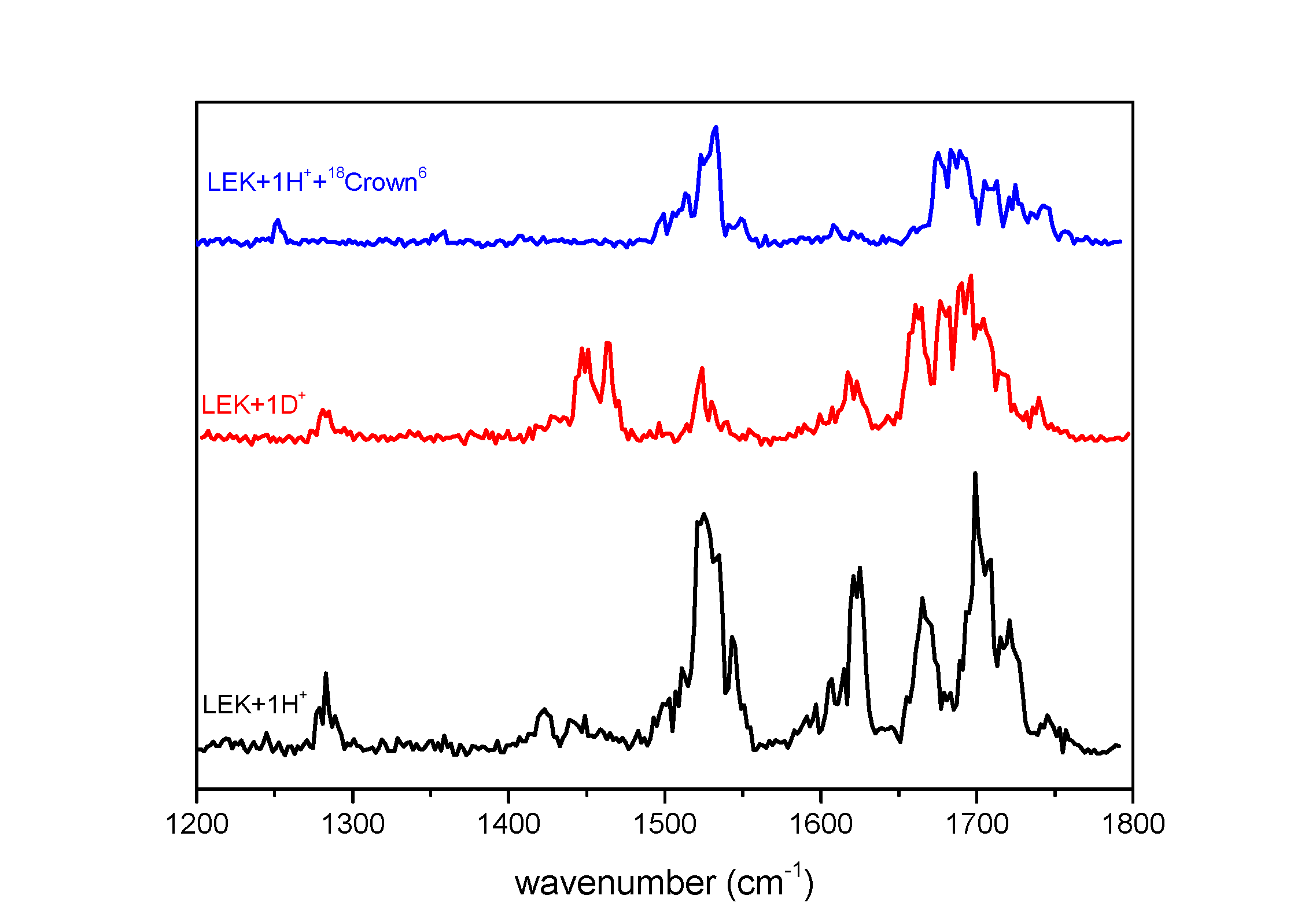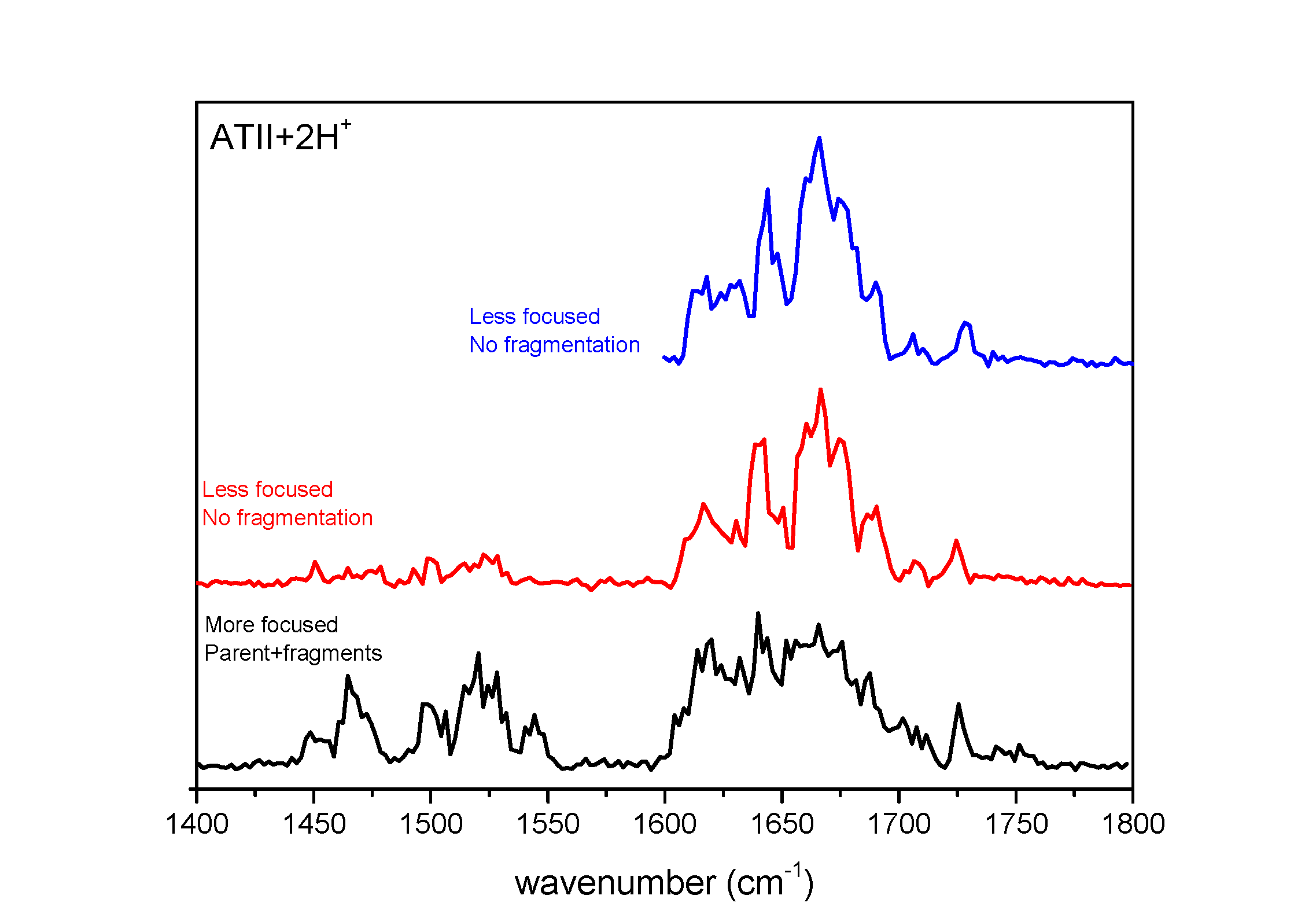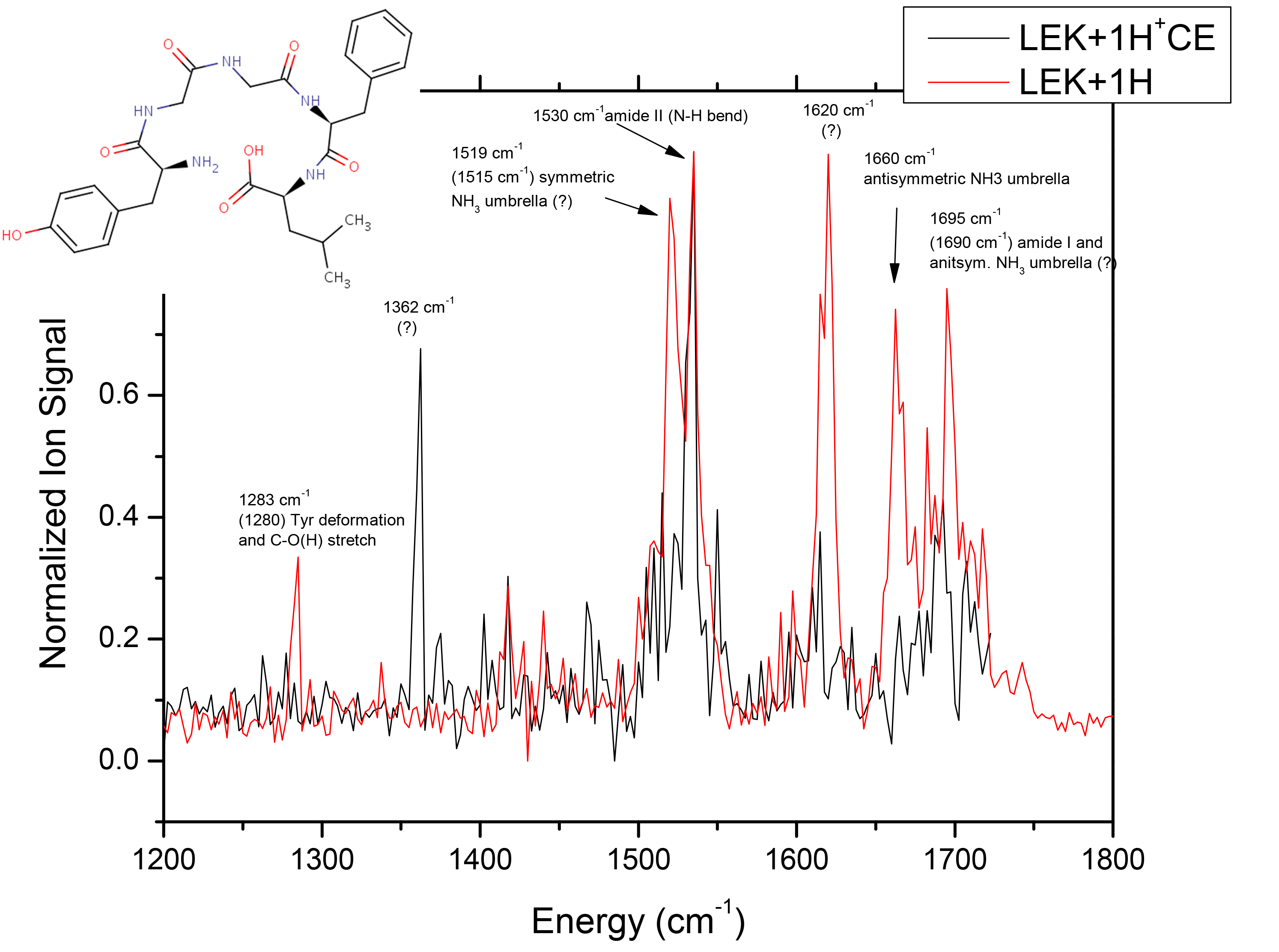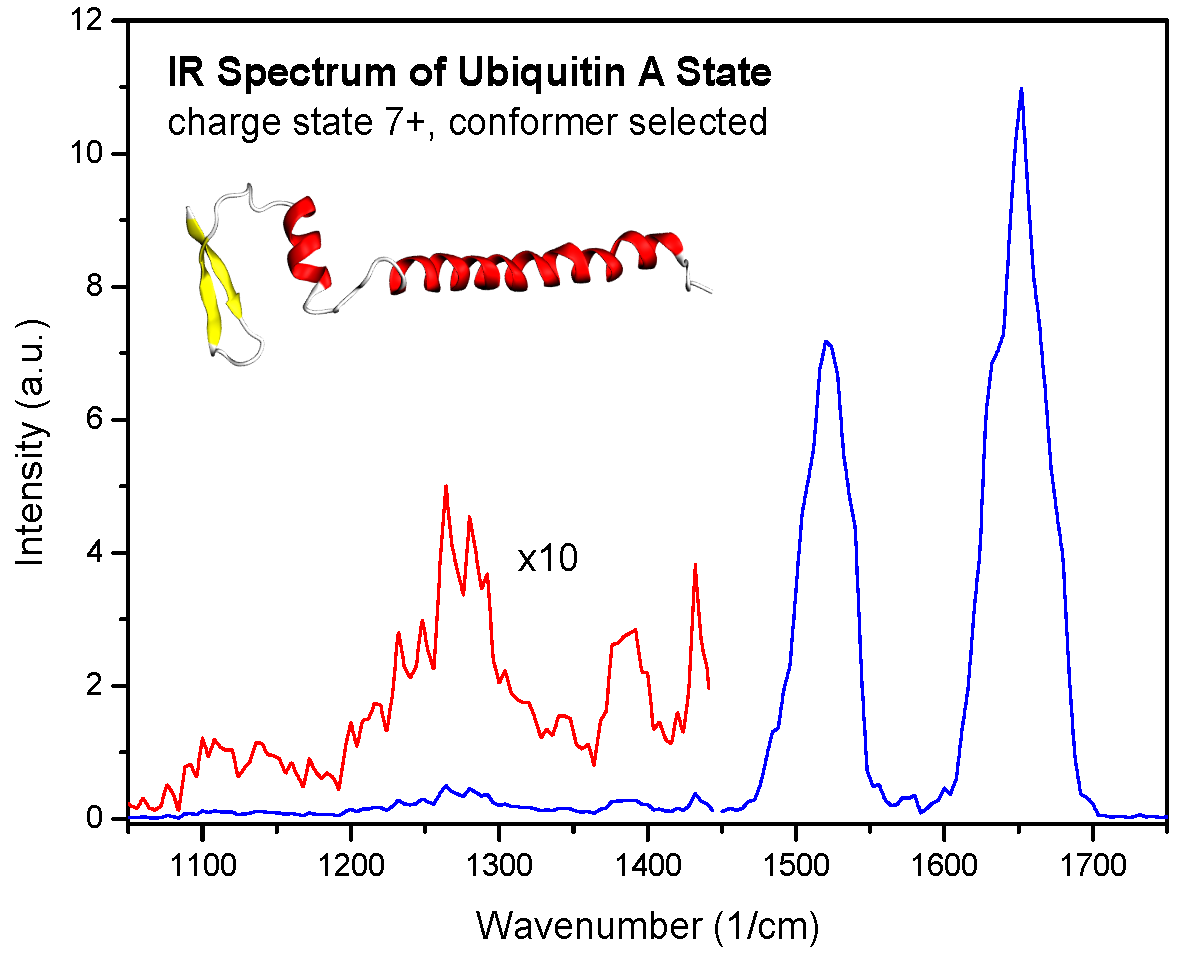
FEL
 AC
CP
MP
PC
TH
MPG
AC
CP
MP
PC
TH
MPG
The FHI FEL
- FEL home
- News
- Publications
- Specifications
- Live Monitor
- Pictures
- The people involved
- The FEL building
User experiments
- Gas phase ions
- Metal clusters
- Gas phase biomolecules
- Solid state lattice dynamics
- Surface spectroscopy
Links
Latest News
September 15, 2015: New publication
The group of Alexander Paarmann (FHI Dept. PC) used the generation of second harmonic radiation (SHG) to investigate the nonlinear response of silicon carbide (4H SiC) in the energy range around the transverse optical (TO) and longitudinal optical (LO) phonon excitations. The publication Second harmonic generation spectroscopy in the Reststrahl band of SiC using an infrared free-electron laser by A. Paarmann, I. Razdolski, A. Melnikov, S. Gewinner, W. Schöllkopf, and Martin Wolf just appeared in Applied Physics Letters; Appl. Phys. Lett. 107, 081101 (2015).
Latest News
August 6, 2015: New publication
The group of Gert von Helden used the FEL radiation to record spectra of protonated leucine enkephalin molecules embedded in superfluid helium nano-droplets. Leucine enkephalin is a pentapeptide of mass 555.6 amu. It is also known as YGGFL, Tyr-Gly-Gly-Phe-Leu, and Leu5-Enkephalin. The helium nano-droplet provides a unique matrix for vibrational spectroscopy because it cools the molecule to an ultra-cold temperature of 0.4 K, while the weakly interacting helium atoms hardly induce a disturbance by the matrix to the chromophore. Good agreement between the experimental and theoretical results allow for an assignment of a preferred molecular structure. Read the article IR spectroscopy of protonated leu-enkephalin and its 18-crown-6 complex embedded in helium droplets by A.I. Gonzalez Florez et al. which has just appeared in PCCP.
Latest News
May 13, 2015: New publication describing the FHI FEL appeared
W. Schöllkopf, S. Gewinner, H. Junkes, A. Paarmann, G. von Helden, H. Bluem, and A.M.M. Todd,
“The new IR and THz FEL Facility at the Fritz Haber Institute in Berlin,”
Advances in X-ray Free-Electron Lasers Instrumentation III, Sandra G. Biedron, Editor, Proc. of SPIE Vol. 9512, 95121L (2015).
Copyright 2015 Society of Photo-Optical Instrumentation Engineers. One print or electronic copy may be made for personal use only. Systematic reproduction and distribution, duplication of any material in this paper for a fee or for commercial purposes, or modification of the content of the paper are prohibited.
http://dx.doi.org/10.1117/12.2182284.
Latest News
March 23, 2015: New publication of results gained with the FHI FEL
The group of Gert von Helden, in collaboration with groups from Antwerp (Belgium), Warwick (UK), Santa Barbara (USA), and FU Berlin (Germany), investigated protomers of benzocaine, a commonly used local anesthetics, by combining ion mobility spectrometry with IR spectroscopy. The publication Protomers of Benzocaine: Solvent and Permittivity Dependence by S. Warnke et al. has just appeared in JACS.
Latest News
December 10, 2014: Second publication of results gained with the FHI FEL
The group of Prof. Knut Asmis in collaboration with the group of Prof. Mark Johnson from Yale University, USA, investigated the structure of the "magic" water complexes H3O+(H2O)20 and Cs+(H2O)20 using the intense IR pulses of the FHI FEL. The beautiful results have now appeared in PNAS 111 (51), 18132–18137 (2014).
Latest News
October 27, 2014: First publication of results gained with the FHI FEL
The research group of Prof. Knut Asmis investigated the structure of the anionic ClMgCO2- complex using the intense IR radiation of the FHI FEL. The results, which were gained in collaboration with the group of Prof. Einar Uggerud from Oslo, Norway, have now appeared in Angewandte Chemie Int. Ed. 126 (52), 14635–14638 (2014).
Latest News

May 28, 2014: IR spectra of Leucine Enkephalin (LEK, a penta-peptide of 555 Daltons) embedded in a superfluid He nano-droplet (temperature 0.4 K). The spectra of protonated LEK is shown in comparison to spectra observed for deuterated LEK as well as protonated LEK attached to a 18-crown-6 ether.
This work was done in collaboration with Isabel Gonzalez Florez, Doo-Sik Ahn, and Gert von Helden from the von Helden group (FHI Dept. MP).
Latest News

May 9, 2014: IR spectra of the bio-molecule Angiotensin II (1046 Daltons) embedded in a superfluid He nano-droplet (temperature 0.4 K). The graph shows three spectra of the doubly protonated molecule for different experimental conditions. Angiotensin is an oligopeptide hormone that causes vasoconstriction and increased blood pressure in the human body. This work was done in collaboration with Isabel Gonzalez Florez, Doo-Sik Ahn, and Gert von Helden from the von Helden group (FHI Dept. MP).
Latest News

December 13, 2013: IR spectra of a penta-peptide have been observed in the wavelength range from 5 to 9 micron. In these measurements the protonated peptide Leucine Enkephalin (C28H37N5O7 a.k.a. YGGFL, Tyr-Gly-Gly-Phe-Leu, Leu5-Enkephalin) is embedded in a superfluid He nano-droplet (temperature 0.4 K). The spectra shown here correspond to the pure system and to the peptide complexed with a crown ether. This work was done in collaboration with Isabel Gonzalez Florez, Doo-Sik Ahn, and Gert von Helden from the von Helden group (FHI Dept. MP).
Latest News

November 25, 2013: IR spectra of conformer-selected biomolecules measured with the FHI FEL!
A gas-phase IR spectrum of the protein Ubiquitin (76 amino acids) in the charge state 7+ is shown to the right. Prior to the interaction with the FEL radiation, the molecules are mass-to-charge selected and also conformer selected using ion mobility methods. This work was done in collaboration with Stephan Warnke, Kevin Pagel and Gert von Helden from the von Helden group (FHI Dept. MP).
Latest News

November 19, 2013: First IR spectra of size-selected anionic aluminum-oxide clusters measured with the FHI FEL! The clusters, which are prepared in the gas phase, are tagged with deuterium molecules which desorb when the cluster is vibrationally excited by FEL radiation in the wavelength range from 9.3 to 25 micron. This work was done in collaboration with Matias Fagiani, Tim Esser, and Knut Asmis from the Asmis group (FHI Dept. MP).
Latest News

November 9, 2013: We have measured first IR spectra with the FHI FEL. The spectra shown to the right are from transition-metal carbonyl clusters in the wavelength range from 4.5 to 5.3 micron. The plots show vibrational spectra of carbon monoxide attached to small cationic ruthenium clusters and to cationic cobalt-manganese clusters containing 10 metal atoms. The later, for instance, indicate a red shift of the CO vibrational absorption line with increasing manganese fraction. This work was done in collaboration with the Fielicke group (FHI Dept. MP & TU Berlin).
*** November 2013 *** User operation has started. The FHI FEL provides intense, pulsed mid-IR radiation in the wavelength range from 4.5 to 22 micron to the first 5 user experiments.
*** November 2013 *** First IR spectra measured with FHI FEL
We have measured first IR spectra of transition-metal carbonyl clusters in the wavelength range from 4.5 to 5.3 micron. The work was done on collaboration with the Fielicke group (FHI Dept. MP).
 October 10, 2012: Lasing in the mid-IR wavelength range from about 9 to 24 micron has been achieved. When we were running at an electron energy of 25.2 MeV and a current of 150 mA with 10 usec long bunch trains (micro-bunch repetition rate of 1 GHz, macro-bunch repetition rate of 1 Hz), we observed lasing with IR pulse energies up to 100 mJ. The figure shows four undulator-gap scans at slightly different IR-cavity length detunings.
October 10, 2012: Lasing in the mid-IR wavelength range from about 9 to 24 micron has been achieved. When we were running at an electron energy of 25.2 MeV and a current of 150 mA with 10 usec long bunch trains (micro-bunch repetition rate of 1 GHz, macro-bunch repetition rate of 1 Hz), we observed lasing with IR pulse energies up to 100 mJ. The figure shows four undulator-gap scans at slightly different IR-cavity length detunings.
*** February 2012 *** FIRST LASING!
On February 14th the FEL was lasing for the first time. At an electron energy of 28 MeV and a pulse current of about 200 mA, lasing was observed over a cavity-length variation range of 100 micron. At the given conditions the IR wavelength is about 18 micron.
*** October 2011 *** Stay tuned for first gun and linac testing which will occur in the first week of october.
*** August 2011 *** Installation of the main parts of the electron beamline components is finished.
*** April 2011 *** The undulator arrives.
*** January 2011 *** The first electron beamline components arrive.
*** August 2010 *** The concrete arrives.
*** Spring 2010 *** First digging at the construction site.